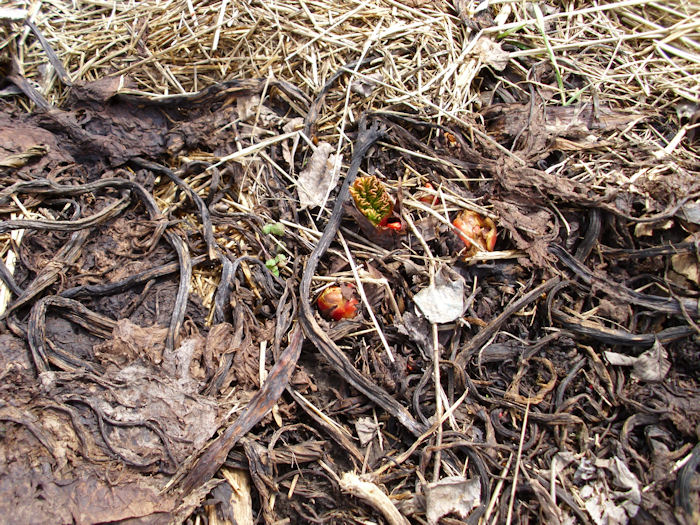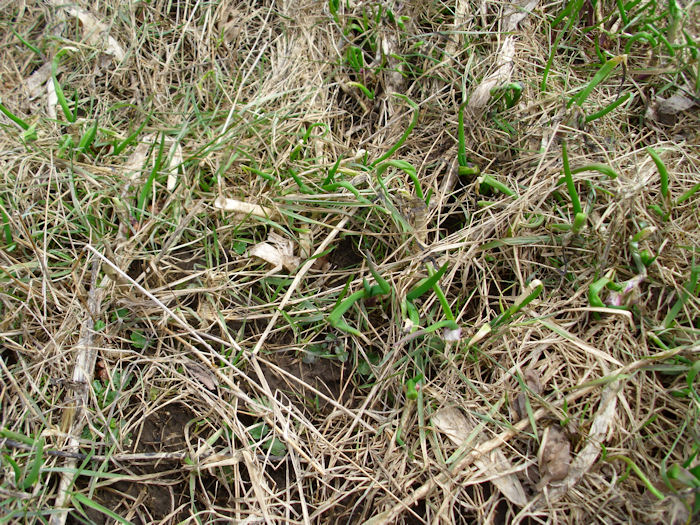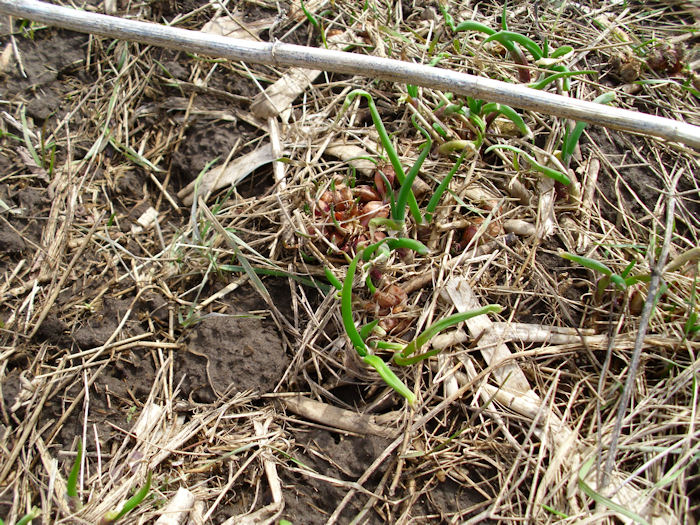Spring really begins to take off with the introduction of new growth in the garden. Our permanent bed has a number of items in it; some start early, while others wait a while to make their presence known. About the earliest arrival in the garden is the rhubarb; a favorite of mine. Nothing quite matches the sour taste of rhubarb, especially the first growth of spring. Rhubarb looks like little red balls when it first appears, and then you begin seeing leaves like these shown here:
Of course, it’ll be a while before I’ll enjoy any fresh rhubarb. I’ll show you how it looks later. One of the ways I like it best is freshly picked with just a tad of sugar. It’s also good in rhubarb rolls and we make wine from it (among other things).
Another early arrival are Egyptian walking onions. They’re called walking onions because they literally walk from place to place in your garden. The top of the onion sprouts a seed head. When the seed head become too heavy for the stalk, it ends up on the ground and replants itself; no extra work on your part! Here’s what the walking onions look like in the garden:
When these onions get large enough, I’ll dig up just a few and enjoy them very much as I would green onions. The Egyptian walking onion tends to be a little stronger and a little larger than the green onions you buy in the store, but you can use them precisely the same way. Here is a patch of ground that shows the seed heads as they appear in spring:
Each one of those tiny little heads will become another onion. We should have quite a wealth of them this year. The Egyptian walking onion is our second taste treat from the garden. The first taste treat is horse radish. The horseradish isn’t quite up yet; at least, it isn’t far enough up to tell what it is. Normally, you’d dig it up this time of year though, grind it up, add some vinegar, and enjoy.
Another spring delight is asparagus. I’ll be sure to upload some pictures of it when it comes up. Asparagus is planted very deep and doesn’t make an appearance yet for at least another two weeks (probably longer).
Part of the springtime ritual is pruning the trees. We have 32 trees in our orchard. This last Saturday we pruned the apples. Each tree has a unique pruning strategy and you’ll find that pruning strategies differ between gardeners and a lot of people have to get tree trimmers near Clovis to help them because they’re unsure how to go about pruning and trimming their trees. Here’s a typical apple tree after pruning.
See how the apple looks sort of like an umbrella or perhaps a gnarled old man? The approach we use works well for hand picking. It’s an older technique that many modern orchards have replaced with a technique better designed for picking apples from a truck.
We prune our apples every other year; the off year. Apples produce well one year and then take a bit of a vacation the next year. Yes, we’ll get some apples from our trees, but not as many as on a good year. Of course, prudent canning techniques ensures everything evens out. What sorts of spring delights do you experience? Let me know at [email protected].




